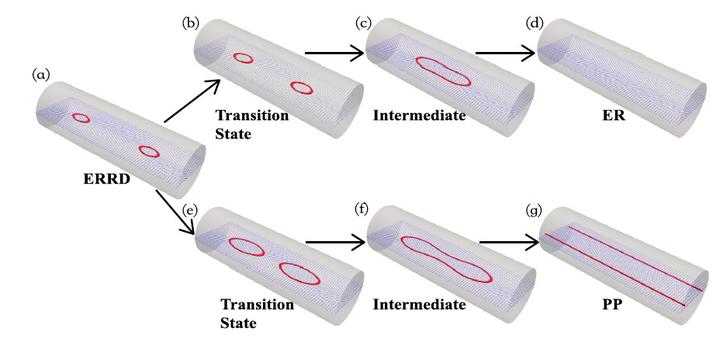Transition pathways between defect patterns in confined nematic liquid crystals

Abstract
Confined nematic liquid crystals can admit multiple stable equilibria. These equilibrium states usually exhibit peculiar defect patterns in order to satisfy the topological constraints imposed by the boundary conditions. In this work, we systematically investigate transition pathways between different stable equilibria of nematic liquid crystals confined in a cylinder with homeotropic boundary condition. To do so, we implement spectral method to minimize the Landau-de Gennes free energy and develop a multiscale string method to accurately compute both minimal energy path and transition state. We first compute the transition pathways under the assumption that system state is invariant along the axial direction of the cylinder. This axial invariant assumption allows us to reduce the simulation domain to a two-dimensional disk. We subsequently remove the axial invariant assumption to search the transition pathways in the three-dimensional cylinder. Numerical simulations demonstrate that there exists a threshold for the cylinder height above which a dominolike transition pathway is more energetically favored than the axial invariant transition pathway. Moreover, we show that the transition pathway from escape radial with ring defects (ERRD) to escape radial has a lower energy barrier than the one from ERRD to planar polar, even though the free energy of the planar polar state is lower than that of the escape radial state. Our approach provides an accurate and efficient method to compute minimal energy path and transition state of confined nematic liquid crystals.